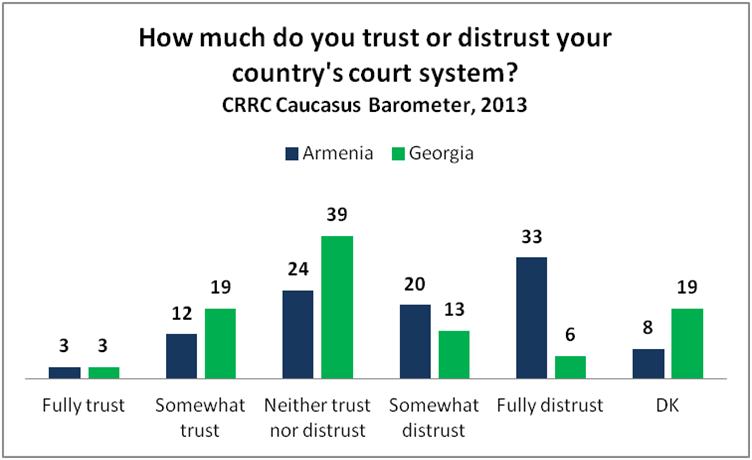
Looking at social and institutional trust in a vacuum, one would expect Georgia to have a more successful SME sector than Armenia, but the opposite is true. So, it appears that other factors present in Georgia hamper the productivity of SMEs. Academic studies by Rudaz 2012 and Welton 2012 find significant impediments from the difficulty individuals face obtaining financing and the fragmentation of agricultural land, problems determined to be more pervasive in the Georgian case. Given that Georgians report higher levels of interpersonal and institutional trust than Armenians, it appears that tangible factors may have more profound effects on the productivity of small and medium enterprises in Georgia.
While this piece overviews the performance of SMEs in Georgia and Armenia in the context of social capital, the second blog in this series will explore more tangible factors affecting the performance of Georgian and Armenian SMEs, including problems in agriculture and financial markets. For more information about public opinion in Georgia and Armenia, consult CRRC’s online data analysis tool.












